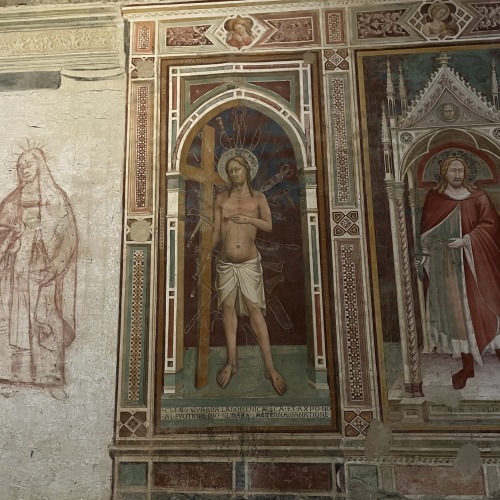I spent most of my Sunday, and International Workers Day, thinking about this fresco inside the Chie
I spent most of my Sunday, and International Workers Day, thinking about this fresco inside the Chiesa di San Miniato al Monte in Florence, painted by Mariotto di Cristofano around 1420. Tightly wrapped around Christ, just barely touching his body, are various tools and instruments that would have been used by laborers in 15th century Florence. Directly below his feet is an inscription in the Tuscan dialect of the Italian language which states, “Whoever does not keep Sunday holy and does not have devotion to Christ, God will condemn to eternal damnation.” This type of image is known by a few different names: Sunday Christ, Christ of the Trades, and Handwerkerchristus, or the Artisan Christ, are to name a few. Christ is depicted as suffering, he gestures towards his side wound as a reminder of his sacrificial crucifixion. The tools surrounding him would have reminded medieval Christians that, through engaging in work on Sundays, they themselves are perpetuating the suffering of Christ, thus re-crucifying him. The inscription serves as a warning of the consequences for not obeying the obligatory abstinence from work on the Lord’s day. The closest visual parallel to this type of image is Christ surrounded by the arma Christi, or the instruments of the Passion, which likely informed the pictorial tradition of the Sunday Christ. In this instance, the artisan’s tools have been allegorically transformed into the arma Christi, and through ignoring one’s Sunday obligations, it was understood that the medieval Christian has prolonged the suffering of Christ. -- source link
Tumblr Blog : douris.tumblr.com
#medieval#medieval art#christian art#sunday christ#florence#firenze#art history#medieval history#middle ages#italian art#fresco

